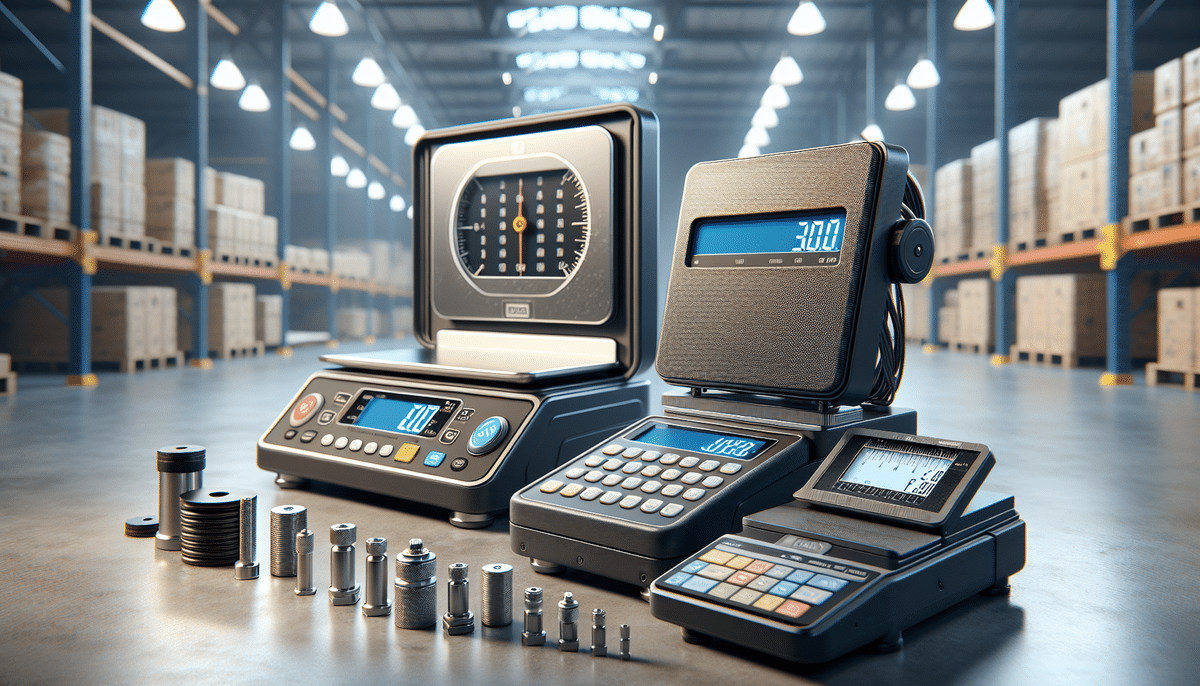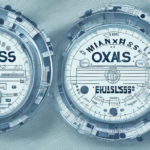Brecknell DCSB vs. Ohaus D51XW: An In-Depth SEO Optimized Comparison
Choosing the right weighing scale is crucial for operational efficiency in various settings, from manufacturing floors to laboratories. Among the myriad of options available, the Brecknell DCSB and the Ohaus D51XW stand out as two of the most popular and advanced choices in the market. Both scales offer a plethora of features tailored to meet diverse industrial needs. This article provides a comprehensive comparison of these two models, examining their features, performance, and suitability to help you make an informed decision.
Key Features Comparison
Weighing Capacity
The Brecknell DCSB has a maximum capacity of 100 pounds, making it ideal for lighter industrial tasks such as packaging and small-scale inventory management. In contrast, the Ohaus D51XW can handle up to 20,000 pounds, suitable for heavy-duty applications like bulk material handling and large-scale manufacturing processes.
- Brecknell DCSB: Up to 100 lbs
- Ohaus D51XW: Up to 20,000 lbs
Choosing a scale with the appropriate capacity is essential to ensure it aligns with your operational environment, whether it's a warehouse, laboratory, or manufacturing plant.
Accuracy and Precision
Precision is paramount in industrial weighing. The Brecknell DCSB offers a resolution of up to 1/10,000, suitable for applications requiring high accuracy, such as component counting and quality control. The Ohaus D51XW surpasses it with a resolution of up to 1/20,000, providing exceptional precision for industries like pharmaceuticals and jewelry where minute measurements are critical.
Regular calibration and maintenance are essential to sustain accuracy in both scales. According to an ANSI report, maintaining calibration schedules can enhance the reliability of industrial scales by up to 30%.
Display and Controls
User interface plays a crucial role in the efficiency of scale operation. The Brecknell DCSB features a touch screen display, enabling intuitive navigation and easy access to various features. This touch functionality enhances user experience, especially in high-paced environments.
Conversely, the Ohaus D51XW relies on physical buttons housed within a rugged stainless-steel casing, providing durability and resistance to damage in harsh industrial settings. While it lacks a touch interface, the physical controls are robust and reliable, ensuring consistent performance even in challenging conditions.
Connectivity Options
Modern industrial scales require versatile connectivity to integrate seamlessly into existing systems. The Brecknell DCSB offers essential connectivity options like USB, facilitating straightforward data transfer to computers for logging and analysis.
The Ohaus D51XW excels with its extensive connectivity suite, including USB, RS232, Ethernet, and Wi-Fi. This range of options allows for more flexible integration into complex workflows, supporting real-time data monitoring and remote management.
- Brecknell DCSB Connectivity: USB
- Ohaus D51XW Connectivity: USB, RS232, Ethernet, Wi-Fi
While the Ohaus D51XW's advanced connectivity features offer greater flexibility, they may come at a higher cost. Assess your specific connectivity needs and budget constraints when selecting a scale.
Performance and Durability
Speed and Measurement Performance
Operational speed can significantly impact productivity. The Ohaus D51XW is engineered for high-speed operations, capable of taking measurements in under one second, which is ideal for fast-paced production lines. The Brecknell DCSB, while slightly slower, still offers rapid measurements suitable for most industrial applications.
The Ohaus D51XW's high accuracy rate of up to 0.1 grams makes it suitable for precise measurements, whereas the Brecknell DCSB offers an accuracy of up to 1 gram, which is adequate for general industrial use.
Build Quality and Durability
Durability is non-negotiable in industrial settings. The Brecknell DCSB is built with high-quality materials, ensuring it can withstand heavy use in commercial environments. However, it may not be suitable for extreme conditions.
The Ohaus D51XW is designed for the toughest environments, with a stainless steel platform that resists corrosion, extreme temperatures, and chemical exposure. This makes it ideal for laboratories, factories, and other industrial settings where equipment is subject to rigorous demands.
According to ISO standards, the Ohaus D51XW meets higher durability benchmarks, ensuring longevity and minimal downtime in demanding applications.
Power and Connectivity Solutions
Power Options
Power flexibility can enhance the usability of weighing scales in diverse environments. Both the Brecknell DCSB and Ohaus D51XW support AC adapters and battery operation, ensuring they can operate in fixed installations with power access and in portable scenarios where power sources are limited.
The Brecknell DCSB offers a rechargeable battery lasting up to 100 hours, ideal for prolonged use without access to power outlets. The Ohaus D51XW also supports long-lasting battery operation, complemented by its stable AC power options that ensure consistent performance.
Choosing between AC and battery power depends on your operational environment. For stationary setups, an AC adapter provides a reliable power source, while battery operation offers the flexibility needed for mobile or remote applications.
Connectivity Options
Modern industrial scales require versatile connectivity to integrate seamlessly into existing systems. The Brecknell DCSB offers essential connectivity options like USB, facilitating straightforward data transfer to computers for logging and analysis.
The Ohaus D51XW excels with its extensive connectivity suite, including USB, RS232, Ethernet, and Wi-Fi. This range of options allows for more flexible integration into complex workflows, supporting real-time data monitoring and remote management.
- Brecknell DCSB Connectivity: USB
- Ohaus D51XW Connectivity: USB, RS232, Ethernet, Wi-Fi
While the Ohaus D51XW's advanced connectivity features offer greater flexibility, they may come at a higher cost. Assess your specific connectivity needs and budget constraints when selecting a scale.
User Experience and Ease of Use
Interface and Controls
User experience is a vital aspect of scale selection. The Brecknell DCSB is designed with simplicity in mind, featuring a straightforward interface that is easy to navigate, making it ideal for users who prefer minimalistic and efficient operations.
In contrast, the Ohaus D51XW caters to users who require more advanced features and customization. Its comprehensive control options and customizable settings allow for tailored operations, providing greater flexibility for complex weighing tasks.
Installation and Maintenance
Both scales prioritize ease of installation and maintenance. The Brecknell DCSB's compact design allows for easy setup in limited spaces, while the Ohaus D51XW's robust build ensures durability with minimal maintenance requirements.
Regular calibration and software updates are recommended to maintain optimal performance and accuracy for both models.
Cost and Value for Money
Budget considerations are critical in decision-making. The Brecknell DCSB is a cost-effective option, offering reliable performance and essential features without a hefty price tag, making it suitable for businesses with budget constraints.
The Ohaus D51XW, while more expensive, provides advanced functionalities and greater customization, offering long-term value through its versatility and durability. According to a recent market analysis from Statista, investing in a robust scale like the Ohaus D51XW can lead to cost savings by reducing maintenance and downtime.
Customer Feedback and Ratings
Customer feedback provides practical insights into product performance. Both the Brecknell DCSB and Ohaus D51XW have garnered positive reviews for their accuracy, durability, and user-friendliness.
- Pros: High accuracy, sturdy construction, easy data transfer.
- Cons: Higher cost for Ohaus D51XW, limited capacity of Brecknell DCSB.
Some users appreciate the Ohaus D51XW's extensive connectivity options, while others find the Brecknell DCSB's compact size limiting for larger applications. Overall, both scales receive high ratings for their respective strengths.
Conclusion: Selecting the Right Scale for Your Needs
Both the Brecknell DCSB and the Ohaus D51XW are exemplary industrial scales, each excelling in different areas. Your choice should hinge on your specific requirements:
- Brecknell DCSB: Ideal for budget-conscious users needing reliable performance for lighter tasks with straightforward data transfer capabilities.
- Ohaus D51XW: Best suited for users requiring high capacity, advanced connectivity, and greater precision for diverse and demanding industrial applications.
Assess your operational needs, budget, and desired features to select the scale that will best enhance your workflow and productivity.






















